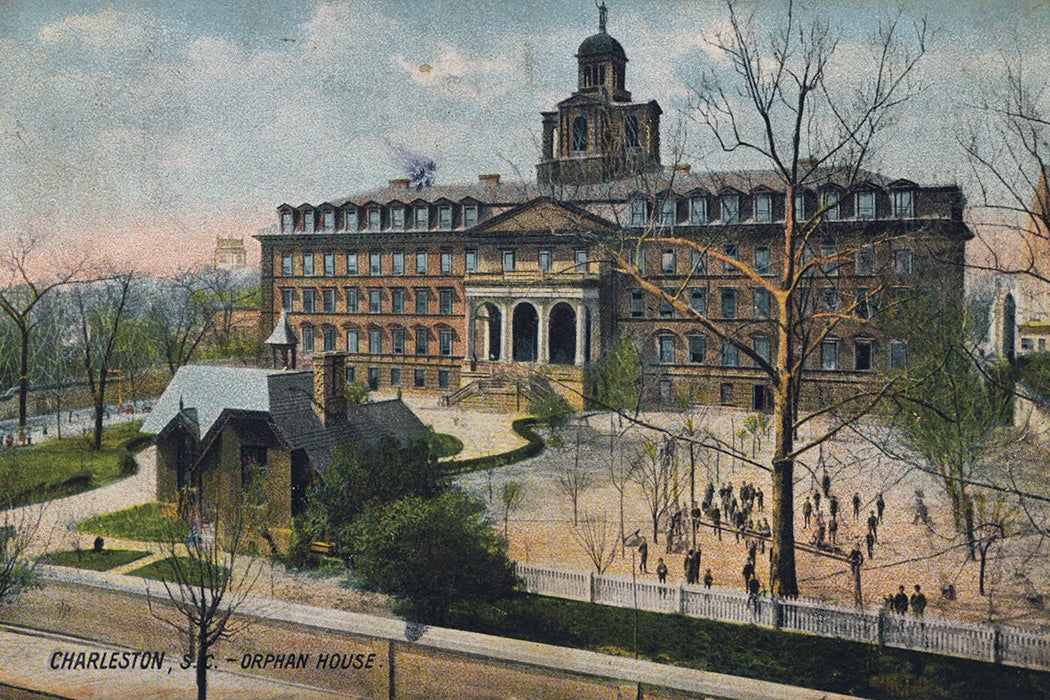Much is known about the lives of white, slaveholding mothers in the antebellum South. But their poorer sisters’ stories are less well known. The historian John E. Murray recovers some of their perspectives in letters written to the nation’s first public orphanage—correspondence that reveals both tragedy and deep love.
In the years before the Civil War, poor whites in the South usually lacked land and couldn’t afford slaves. That excluded them from the brutal treatment of slaveholders, but it also excluded them from social mobility in a planter-dominated society. Planters benefited by pitting them against free blacks and enslaved people alike.
The hardscrabble life and low social status of poor whites meant that most of their stories went undocumented. But John E. Murray found a neglected account of some of their lives in letters written to the Charleston Orphan House, the nation’s first public orphanage. Between 1790 and 1951, it was home to around 5,000 children.
The majority were not parentless: Some were the children of parents who simply could not support their children. Those parents “commonly notified the Orphan House of the dire straits in which they found themselves through a letter, many of which survive,” says Murray. After receiving a letter, the Orphan House sent a worker to the household to investigate its conditions. That fact was well known—and means the letters contain relatively accurate descriptions of families’ circumstances.
Murray documents the stories of informal foster mothers, stepmothers, or women related to children, and mothers themselves. Unrelated women, most of whom seem to have been widows, often took children in temporarily or for long periods of time. Some boarded children and wrote to the Orphan House when their relatives stopped paying for their upkeep. Others took on responsibility for friends’ children.
Sometimes unrelated people would inform the orphanages that prostitutes or free black women were caring for children they had not borne. Though the typical case involved “a warm attachment,” Murray writes, these unrelated mothers usually got to a point where they could no longer care for the child and asked the Orphan House to step in.
Other times, stepmothers and relatives asked for help. Stepmothers might find themselves saddled with another woman’s child who they could not support, especially when their new husband died and their own income went away. So could family members, though they often were able to cobble together help as they watched a family situation devolve.
Weekly Newsletter
And then there were mothers, whose applications, Murray notes, made up the majority. This diverse group of women “communicated aspects of being poor and desperate in one of the wealthiest cities in America,” telling stories of disease, bereavement, and deprivation. One mother, Susan Adams, wrote in 1824 that she had sold everything she had and still could not provide for her sons. Another, Elizabeth King, wrote in 1838 that she was the “wife of a maniac,” a common claim by women whose lives were affected by mental illness. Alcoholism, abandonment, and poverty ring through from their letters.
To Murray, the letters don’t just show tragic life circumstances—they give glimpses of women’s enduring love for their children. As historical documents, they show evidence of social networks, contracts, socioeconomic status, and social mores. As emotional ones, they are a reminder of how poverty and misfortune can break apart families—and how enduring family attachments can be.
Support JSTOR Daily! Join our new membership program on Patreon today.







